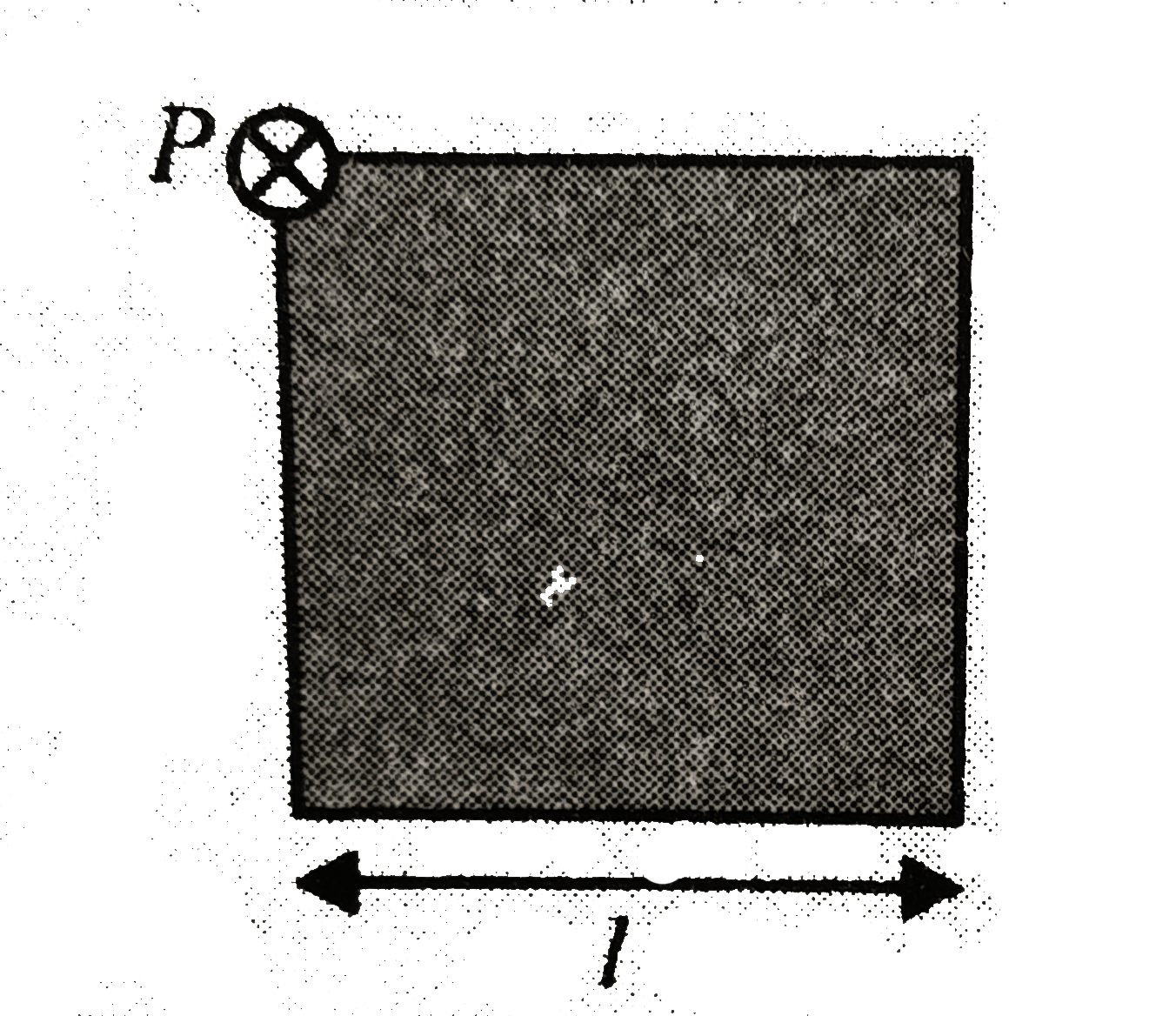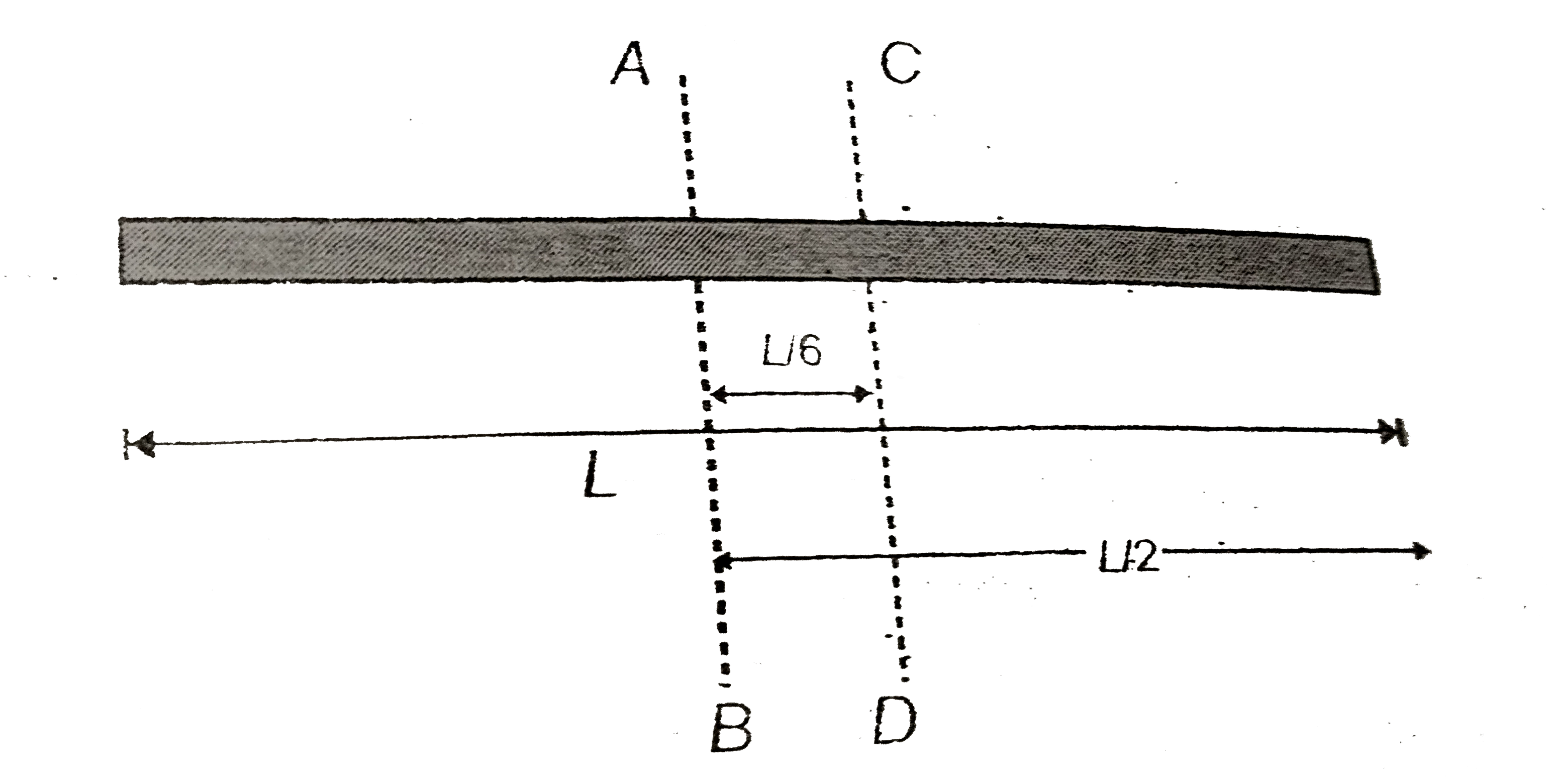Use the parallel axis theorem to find the moment of inertia ofa uniform rod of mass M = 3kg and length 2a (a = 1m), about a perpendicular axis through one end?
To find the moment of inertia of a uniform rod of mass M=3kg and length 2a (where a=1m) about a perpendicular axis through one end, we can use the parallel axis theorem. Here’s a step-by-step solution:
Step 1: Identify the parameters
We have:
- Mass of the rod, M=3kg
- Length of the rod, L=2a=2×1m=2m
Step 2: Moment of inertia about the center of mass
The moment of inertia Icm of a uniform rod about its center of mass (which is located at a distance L2 from either end) is given by the formula:
Icm=112ML2
Substituting the values:
Icm=112×3kg×(2m)2=112×3×4=1kg m2
Step 3: Apply the parallel axis theorem
The parallel axis theorem states that the moment of inertia about any axis parallel to an axis through the center of mass is given by:
I=Icm+Md2
where d is the distance from the center of mass to the new axis. In this case, d=L2=1m.
Substituting the values:
I=Icm+M(L2)2
I=1kg m2+3kg×(1m)2
I=1kg m2+3kg m2=4kg m2
Final Answer
Thus, the moment of inertia of the uniform rod about a perpendicular axis through one end is:
I=4kg m2
We have:
- Mass of the rod, M=3kg
- Length of the rod, L=2a=2×1m=2m
The moment of inertia Icm of a uniform rod about its center of mass (which is located at a distance L2 from either end) is given by the formula:
Icm=112ML2
Substituting the values:
Icm=112×3kg×(2m)2=112×3×4=1kg m2
The parallel axis theorem states that the moment of inertia about any axis parallel to an axis through the center of mass is given by:
I=Icm+Md2
where d is the distance from the center of mass to the new axis. In this case, d=L2=1m.
I=Icm+M(L2)2
I=1kg m2+3kg×(1m)2
I=1kg m2+3kg m2=4kg m2
Thus, the moment of inertia of the uniform rod about a perpendicular axis through one end is:
I=4kg m2
Topper's Solved these Questions
- SYSTEM OF A PARTICLES & ROTATIONAL MOTIONBOOK - VMC MODULES ENGLISHCHAPTER - SYSTEM OF A PARTICLES & ROTATIONAL MOTIONEXERCISE - SOLVED EXAMPLES
20 Videos
- SYSTEM OF A PARTICLES & ROTATIONAL MOTIONBOOK - VMC MODULES ENGLISHCHAPTER - SYSTEM OF A PARTICLES & ROTATIONAL MOTIONEXERCISE - PRACTICE EXERCISE-1
4 Videos
- SIMPLE HARMONIC MOTION BOOK - VMC MODULES ENGLISHCHAPTER - SIMPLE HARMONIC MOTION EXERCISE - 7-previous year question
46 Videos
- SYSTEM OF PARTICLES AND ROTATIONAL MOTIONBOOK - VMC MODULES ENGLISHCHAPTER - SYSTEM OF PARTICLES AND ROTATIONAL MOTIONEXERCISE - IMPECCABLE
56 Videos
Similar Questions
Calculate the moment of inertia of a rod of mass M, and length l about an axis perpendicular to it passing through one of its ends.
View SolutionCalculate the moment of inertia of a rod of mass 2 kg and length 5 m about an axis perpendicular to it and passing through one of its ends.
View SolutionThe moment of inertia of a straight thin rod of mass M and length l about an axis perpendicular to its length and passing through its one end, is
View SolutionFind the moment of inertia, about a diameter, of a uniform ring of mass M = 8kg and radius a = 1m?

View SolutionFind the moment of inertia of a uniform square plate of mass M and edge of length 'l' about its axis passing through P and perpendicular to it.

View SolutionCalculate the moment of inertia of a uniform rod of mass M and length l about an axis passing through an end and perpendicular to the rod. The rod can be divided into a number of mass elements along the length of the rod.

View SolutionThe moment of inertia of a thing uniform rod of length L and mass M, about axis CD (as shown in figure) is

View SolutionThe moment of inertia of a cube of mass M and edge length a about an axis passing through one of its edge is
View SolutionThe moment of inertia of a uniform rod of mass 0.50 kg and length 1 m is 0.10 kg m^2 about a line perpendicular to the rod. Find the distance of this line from the middle point of the rod.
View SolutionThe moment of inertia of a uniform rod of length 2l and mass m about an axis xy passing through its centre and inclined at an enable α is

View Solution
